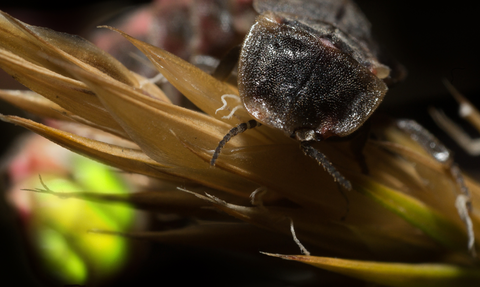
Glow-worm
Photo credit: @tomellisphotography
Seeking the wild lights of London
The glow-worm (a light-emitting beetle) is one of Britain’s most remarkable and yet mysterious insects which has enchanted people for generations. However, surveys and anecdotal evidence suggest that numbers of glow-worm are in sharp decline in London (and other parts of Britain). In some areas, numbers appear to be so low that they could become extinct in the capital. Therefore, we are appealing for people to keep an eye out for glow-worms to help us get a better understanding of their whereabouts in London.
Glow-worms have captivated some of our greatest writers from William Shakespeare to Roald Dahl, and inspired poets such as William Wordsworth who called them earth-born stars. They even got a special mention in the commemoration of the animals involved during World War I for enabling soldiers to study strategic maps in the dark.
One suspected cause of their decline is that light pollution in urban areas makes it increasingly difficult for glow-worms to mate, because the male may be unable to see the greenish light produced by the female, as it is effectively dazzled by the spectral glare from white LED lights. Other threats include habitat fragmentation, habitat loss, and pesticides. The females are flightless so they can only recolonise an area by walking to it, this means they are particularly sensitive to habitat fragmentation.
Glow-worms appear to require specialised habitats, but they are elusive and can be found in an array of places not necessarily associated with the countryside. In the capital they can be found on sites such as railway corridors with a mix of scrub and grassland, shady churchyards with moist conditions, and meadows with quality chalk grassland habitat. These green spaces are rich with the snails and slugs that glow-worm larvae feast upon. The larvae are voracious predators and can consume a slug or snail up to 200 times their body weight.
Our existing knowledge is based on mostly public records from Greenspace Information for Greater London (GiGL). The Trust has received some funding to help carry out surveys in its reserves and train volunteers how to look for both the larvae and adults, plus to undertake habitat enhancement works in areas where they are known to be present or recorded there until recently. We will investigate the possibility of some targeted reintroductions which will enable the capital’s glow-worm population to be more resilient to future threats. We will do this by providing conditions for mature larvae to grow before being released on to the restored habitats in our nature reserves and potentially other sites in west and south London.
We had historical records from three of our nature reserves: Chapel Bank, Hutchinson’s Bank, and Denham Lock Wood. Already this year we are pleased to have found them on West Kent Golf Course and Saltbox Hill as well. The Trust is encouraging other groups across London to repeat surveys, using the same methodology, and collecting habitat data, to improve our understanding of what habitat they use in London and how to fine-tune management prescriptions.
Following these surveys, we will undertake conservation work with volunteers such as clearing scrub and bramble thickets so that the remaining glow-worms that live there can flourish. We will restore the grassland habitat on sites where they live, or will be reintroduced, through a detailed habitat management plan which could include conservation grazing with cattle and meadow cuts with machinery.
We are one of several Wildlife Trusts which are currently working on glow-worm projects around the country. Thank you to the Swire Charitable Trust and Inflexion for providing grant funding to support on this project. We would also like to thank our generous supporters who donated via the Big Give’s Green Match Fund.
We are grateful for the advice and contributions of the following researchers and experts; Prof. Alan J A Stewart, Martin Dale, Dr. Paul L Smith and Robin Scagell. Data and results from our project will be fed back to help those working on a better collective understanding of glow-worms at a national level.






